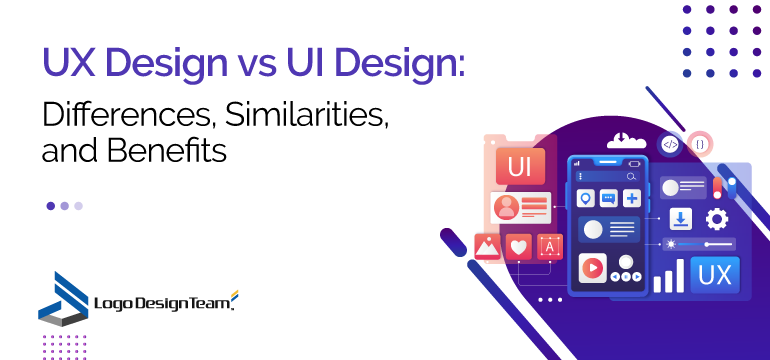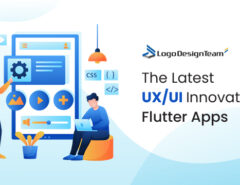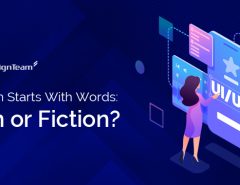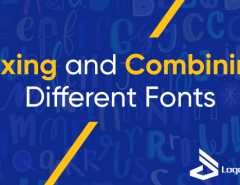Many people in ecommerce mistake UI and UX design for the other or think they are interchangeable. While UI and UX design are quite similar and work together, they also have distinct differences that you should know.

This will help you to make the right decisions and provide an enjoyable experience for your customers when they engage with your digital products and services.
This article provides a breakdown of both concepts with practical explanations and definitions of their differences, similarities, and how they can benefit your business.
If you’re looking to work as a UI designer or UX designer, this article will help you understand the different categories better to make better-informed decisions for career choice.
It is also useful for businesses who would like to hire any of the professionals to improve the look or feel of their digital products or services. Let’s dive in.
What is UI Design?

UI design is short for User Interface Design. User interface simply means the way an application or web platform is graphically laid out.
This has to do with the buttons users can click on, texts they read, images, headers, text sliders, and every other thing that users can see on your digital product. The visual aspects they can interact with.
It also includes animations, transitions, screen layout, and every visual element you build into your product. These items don’t just appear on the screen; a UI designer designs them during the developmental stage of the product building.
UI design helps to bring your visual ideas for your product to life. It determines how the app would look in a way that would be appealing to the end-users and usable for them.
Thus, it deals with areas such as color schemes, size of visual elements like clickable buttons, size of the font, the width of the text, etc. UI design is concerned with the aesthetics of your product.
It matches your product to suit your brand message and identity. When a UI designer designs the user interface, they make the visual design attractive, the visual elements interactive, and the themes, color, etc. stimulating to make the user want to use the app.
What is UX Design?

UX design means User Experience design. The user experience is determined by the way a user interacts with the product and the relationship that is formed with it through that experience.
Many times, we use digital products like web platforms and applications that simply make us cringe. The visual elements are off; the experience is not smooth and seamless; it lags and is not enjoyable to use. That’s a bad user experience.
It is only through good user experience design that a user can get a good user experience. Thus, user experience design ensures that the user interface works well, the way the UI designer has designed it to function.
They bring the designs that the UI designer has made to life by providing structure and functionality to the app. So, where a UI designer creates aesthetic buttons to look a certain type of way, the UX designer ensures that when a user clicks that beautiful button, it works.
They ensure the app or web product is easily navigable, not complicated, and intuitive. If the product works well and is seamless to use, the user will have an enjoyable user experience.
While the UI design of a product may be aesthetically appealing, the UX design will determine if the user will continue to use the app or pay for the product.
Similarities and Differences between UX design and UI design
Like we earlier mentioned, these two concepts are intertwined and they work hand in hand. Often you will see the concepts referred to as UI/UX design because there’s no one without the other.
Here are some basic similarities and differences that describe how both concepts work together as well as separately.
1. UI design is concerned with the visual properties of the design, but without the UX design, the product will not function as it should, even though it is aesthetically appealing.
2. They both work to create a unique experience for users based on how they interact with the product.
3. They both seek to understand users and how they would like to engage with a product.
4. UI design focuses on the aesthetically and visually appealing aspects of design.
5. UX designs are not easily quantifiable nor visible, UI design is tangible and can be seen.
6. UI design determines how far a UX design goes because it limits what users can do on a product or website.
7. UX design focuses on how a product has been laid out to the user via the UI design.
8. UX designers test and validate their designs to ensure it meets the expectations of users.
The benefits of UI/UX design
UI/UX design provides a ton of benefits to product designers, web and software developers, and even the business. Here are the benefits you stand to enjoy when you employ UI/UX design in your product development.
1. It helps to increase customer acquisition and loyalty
With a well-executed user experience design, you become a strong contender in the industry with many customers eager to try out your services.
Not only do you get free advertisement through word of mouth from customers, but you also get customers that will be loyal to your digital product for a long time. You become their go-to brand for the service you offer because you provide the experience they are looking for.
As your products and platforms are aesthetically appealing and work seamlessly, they trust you to deliver and can refer you to other potential customers who are looking for what you offer.
2. Gives you an opportunity to generate revenue
Through UI/UX design, you can decide how you want your users to engage with your product, in a way that spurs them to buy or become long-time users.
Through various testing methods, including A/B testing, or prototyping with the best UX prototyper, you can find out how well users respond to different designs to see what works best and what they prefer.
When you consistently provide what your customers and clients are looking for, you are assured of steady revenue growth because they will always pay to access what they need.
Also, user testing helps you to improve the look and feel of your product, tweak experiences and improve call to action placements to generate high-quality leads that can be converted to sales.
3. You save time and costs
UI/UX design in your development process helps you address usability issues early on because research and anticipating users’ needs will help you catch them before production.
It also helps you ensure that your ideas and design are scalable so that as you start to garner customers and users, you can also grow the product with them and to suit them.
When you design your product with users in mind, you save time as well as money.
Best UI/UX design tools you can work with
There are many UI/UX design tools that you can get started with to help you improve your user experience. We have highlighted our top two below.
1. Maze

Maze is a powerful testing platform that allows you to test and validate your design ideas before launching. It provides a rapid-testing platform where you can run quick tests even without a prototype.
It is a most loved tool for UI/UX designers because it has an easy-to-use interface that provides diverse tests to see how well users interact with your products. It even provides open-ended follow-up questions after every test for users to share their opinions.
Maze allows for A/B testing and is fully integrable with other UI tools that may be necessary for your work. You can use Maze on your browser for $25 a month or for free on personal projects.
2. Sketch

This very popular tool is every UI or UX designer’s dream. It is an intuitive app that first began as a UI tool for designing the best web products; now, even UX designers can make the most of it to provide the best experience for users.
Sketch is easy to use and provides a collaborative platform where team members can adjust, modify and share ideas in the course of a product design. In addition, its prototyping tools are integrable with platforms through third-party plugins.
However, you can only use Sketch on macOS; it is not suitable for other types of operating systems. Furthermore, it is not free; to use the platform, you pay $9 per month.
Conclusion
UI design and UX design are similar and yet, quite different. This article has broken down these concepts into bite-sized chunks that you can easily understand to help you provide the best experience for users of your products.
Here, you will find answers to what makes them similar and what makes them unique. You would also find highly recommended and most-loved tools by UI/UX design professionals around the world that you can start with to create user-centric experiences.




